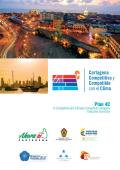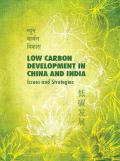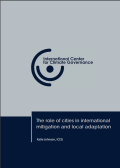
The capital cities of Bolivia, Ecuador and Peru are vulnerable to climate change, partly due to their dependence on water from retreating Andean glaciers for human consumption, industrial use, hydropower production, agriculture and other uses. This comparative study of La Paz, Quito and Lima highlights the challenges, enabling factors, lessons learned and implications for climate compatible development illustrated by a project to assess the cities’ carbon and water footprints.
Key findings include:

This report outlines the strategies in place for the World Heritage City of Cartagena, Colombia to become an icon of climate compatible development, where the risk of climate change is converted into an opportunity for development.
The future of Cartagena is uncertain and vulnerable to climate change. Even a 2C increase in temperatures will likely raise sea levels in the area by 60cm by 2040. Further risks of drought, and increased rainfall have motivated action to prevent such events unfolding and hampering the future of its citizens.
The vision of Plan 4C is that by 2040, Cartagena de Indias will be recognised as a city that is a model of urban and coastal planning based on climate compatible development: where adaptation and mitigation measures will reduce indices of vulnerability to climate change, improve efficiency of public investment, the quality of life of its inhabitants and the competitiveness of its sectors.

With the recognition on the importance of partnership and collaboration to tackle climate change, the project on Low Carbon Development for China and India seeks to understand learnings on options, barriers and success stories on implementability of policies and programmes promoting low carbon development in China and India.
Based on an understanding of similarities and differences between China and India, in 2012, The Energy and Resources Institute of India (TERI), National Center for Climate Change Strategy and International Co-operation, Central University of Finance and Economics and Zhejiang University launched one of the first collaborative efforts between research institutes in China and India on low carbon development. The intended outcome of the project is supporting policy development by facilitating south-south cooperation, creating relevant knowledge and building capacities.
Buildings represent a key area for climate change mitigation. They account for approximately 30% of global energy consumption, and in turn generate around 20% of all energy-related greenhouse gas (GHG) emissions. Current trends in population growth and urbanization will lead to a significant need for new buildings in the near future. Such growth will bring with it a rise in energy consumption and associated GHG emissions – and not just from residential buildings but also the commercial and industrial developments that accompany them. Considerable opportunities exist to realize significant gains in energy efficiency and implement low-carbon strategies in urban areas.

Cities are large emitters of greenhouse gasses, but are also extremely vulnerable to climate change impacts. This unique position makes cities networks relevant in international discussions on mitigation, where they have over the past few months effectively created a new initiative to cut emissions, along with a credible emissions accounting and reporting protocol, a data repository, and a portal to share progress. At the same time that cities groups are advocating mitigation at the international level, groups within cities are proposing innovative adaptation ideas to address local level climate change impacts, including creative solutions to adapt the urban landscape to sea level rise.
